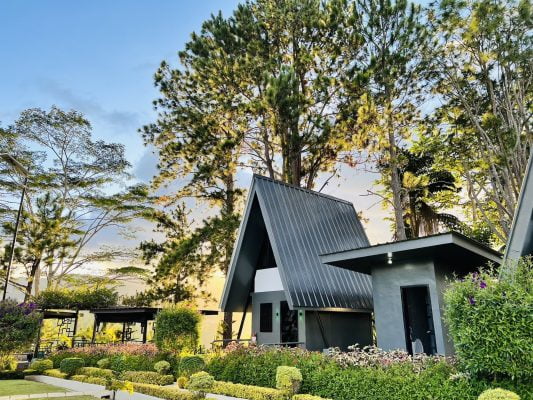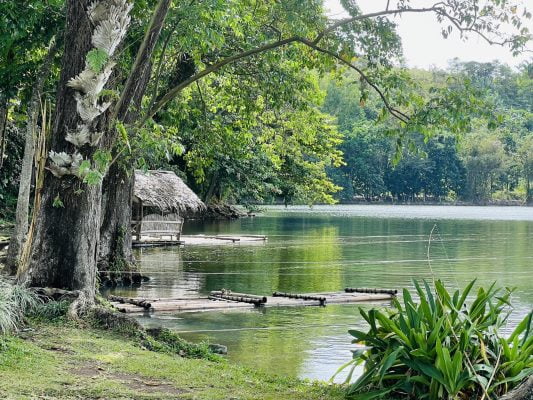Transportation in the Philippines, like in most neighboring countries in Southeast Asia, is quite an interesting facet of every visit. Taking the local modes of transport gives you a better perspective and an authentic experience. This article will let you decide what is the best way to get around the Philippines.
The Philippines has over 7000 islands and traveling from one island to another can be done in different ways. The Philippines has over 70 airports and over 800 commercial seaports. The National Highway named Maharlika Highway provides a north to south road from Luzon to Mindanao. You may travel by air between cities, on a boat between islands and on top of buses to the mountains.
The best way to get around the Philippines depends on what cities or islands you want to visit. In metros like Manila, Cebu and Davao, taxis and jeepneys take people from point A to B. In other urbanized cities, tricycles take you to pretty much anywhere.
Air Travel

Commercial Airlines
The Philippines has a good number of domestic airlines that take you to different parts of the country. Domestic flights in the country are generally affordable. Base fares average at P2000 (around USD $50) and this can go as low as P1 during periodic seat sales.
Here’s a list of commercial airlines that operate in the Philippines:
- Philippine Airlines
- Cebu Pacific
- PAL Express
- CebGo
- Air Asia Philippines
Expectedly, the Ninoy Aquino International Airport in Manila is the busiest gateway in the Philippines. Other busy airports in the Philippines are Mactan International Airport (Cebu), Francisco Bangoy International Airport (Davao) and Clark International Airport (Angeles City).
Regional and Charter Airlines
For destinations that may not be easily accessible by commercial airlines, regional carriers, and charter flights come in very handy. While expensive, charter flights can get you there safely and quickly. Regional airlines now fly to destinations like Batanes and Siargao. Still, some people prefer charter flights to coveted of-the-beaten-path destinations in the country.
Charter flights are also offered by some high-end resorts in the Philippines. Crafts used may be small planes or helicopters (for short-range flights).
Land Travel
Jeepney
The jeepney is one of the most popular and long-standing symbols of the Philippines. It is the “King of the Road” in most large cities and can easily be recognized by their colorful designs and sturdy build. Jeepneys are the most common way of getting around the Philippines.

The Philippine jeepney is actually a hybrid made from military jeeps left by the Americans after the Second World War. Variations of the original design now navigate the streets of almost every city and contribute to the maddening traffic situation.
For a more authentic Filipino experience, ride a jeepney at least once. Fare costs about P10 for the first four kilometers with increments of a peso for every succeeding kilometer. You’d certainly enjoy sitting on that long bench, shimmying and moving your bottom to give space to a new passenger.
When in the provinces, the jeepney serves for long haul travels and often caters to “top loads”—passengers gingerly balancing themselves while sitting on the roof of the vehicle. While the view can be great, we don’t recommend top-loading.
Safety tips: There have been many incidents of pickpocketing in jeepneys so be mindful of your things while riding in one. Avoid placing cellphones and wallets in your pockets and wearing attention-catching jewelry. These make you easy targets for muggers and snatchers.
Tricycle

Tricycles are the poor man’s taxi in the Philippines. These can take you pretty much anywhere you want to go in a city or town. Tricycles are basically motorbikes with a sidecar attached. It can accommodate a maximum of eight people including the driver. Other models can seat more if the sidecar is bigger.
This mode of means of getting around the Philippines is more common in small cities and towns, a very good example of which is Boracay Island. Fare is about P10 and if rented, the cost is usually negotiable. Drivers are often very friendly and may serve as very lively guides if you rent their vehicles for the day.
Padyak

Padyak is much like the tricycle, only it is not motorized. Instead, a bicycle is attached to an open sidecar with an umbrella to give shade to both driver and passengers. In Visayan-speaking parts of the country, it is called a tri-sikad, based on the kicking action (sikad) the driver makes to keep the vehicle running.
Padyak is more common in the shanties and small streets in the Philippines so you will most likely not have to ride one but if you do get the chance, the fare is around P7. If you’re on the hefty side of the scale, it would normally take more effort to move the padyak so a tip would be nice.
Habal-habal/Skylab

This one’s a peculiar way of getting around provincial areas. If you are a foreigner visiting the Philippines for the first time, you will probably cringe at the sight of the habal-habal. It is basically a large motorcycle with a piece of wood plank attached to its seat bearing four or more people. The driver precariously balances all the passengers while driving on rough terrain!
A habal-habal/skylab is quite popular in Siargao. So don’t be surprised to see six people on one motorcycle zip by, one of them even carrying a surfboard! Though quite dangerous, we would still recommend trying this one out just for the thrill of the ride.
Motorbikes
Motorbikes may be rented or hired while in the Philippines. There are quite a good number of businesses renting out this very convenient mode of transportation. One advantage of using a motorbike is it’s easy to weave through traffic. On the downside, accidents can happen.

It would be a good idea to rent a motorbike when touring a relatively small town and you want more control over your itinerary. Just make sure you have a driver’s license. On the other hand, motorbikes with drivers come in handy when there are no jeepneys or trikes available and you want to get to your destination as quickly as possible.
Driving a motorbike without a helmet is a violation in the Philippines. You will be fined and your license revoked when caught by the Traffic Management Group.
Buses
Buses are also a common sight in most large cities in the Philippines. In Metro Manila, buses compete with jeepneys in taking commuters from the residential areas to the commercial districts. There are also bus lines that travel from cities to the provinces on a regular 24-hour basis.
Buses make it very convenient to get around the Philippines, especially for long distance travels overland. If you’d like to reach Baguio City from Manila, hopping on a bus is a good idea. It is cheap and you’ll get great views of the beautiful countryside. Some bus lines also ply the Maharlika Highway with Laoag as the north terminus and Zamboanga City as south.

Train
The Philippine National Railway operates in Luzon, particularly in the Greater Manila Area. Trains in the Philippines have greatly improved over the years but routes are still very limited. You may ride the train from Manila to Laguna and around the Bicol Region.
Taxis and Rental Vehicles
Taxis are widely available in major cities in the Philippines. They can take you almost anywhere within the city and its neighboring towns. There are taxis stationed at most airports, ready to take passengers to their hotels or hosts.
Airport taxis have the tendency to rip off foreign passengers, often giving outrageous rates for an otherwise short trip. To avoid this, we strongly suggest taking a regular taxi out of the airport or at the departure area. Insist on using the meter and demand to disembark if the driver refuses.
Car rentals are also available in key Philippine cities. Some companies have booths stationed at the airport. Car rentals may come with professional chauffeurs or can be self-driven, depending on the contract with the company. Rates often vary depending on the model and make. Sedans, SUVs and vans are mostly available and can be taken to long distances within an island, i.e. Manila to Batangas/Laguna or Davao City to Bukidnon/Surigao.
Sea Travel
Ferries
With more than a thousand islands, one can only expect to ride a ferry when exploring the Philippines. There are different types of ferries in the Philippines, most of them plying the sea route from Luzon to Mindanao. Ferries are quite reliable when traveling short distances. For example: from Batangas to Mindoro, Davao to Samal Island, or Cagayan de Oro to Camiguin Island.

There are also large passenger ships that cater to long haul travels like those from 2Go Travel and Philippine Span Asia Carrier Corporation (formerly Sulpicio Lines). Ferries are often crowded during holiday seasons like Holy Week, All Saint’s Day (Undas), Christmas, New Year, and during major festivals in the provinces.
If you’re traveling throughout the Philippines in your own (or rented) vehicle, ferries also come in handy. RORO (Roll-on, Roll-off) ferries that ply the Strong Republic Nautical Highway cater to large vehicles including passenger buses that travel from Pasay in Manila to as far as Cagayan de Oro in Mindanao.
Safety tip: We advise not taking ferries or any other type of sea transport during the typhoon season (June-October). While shipping lines take all the necessary precautions before going out to sea, they may still be some untoward incidents.
Fast Crafts

This type of sea transportation is very common in the Visayas group of islands. If you want to cut sea travel time from Cebu to Bohol in half, you can take a fast craft. A fast craft is a passenger catamaran fitted with interiors very similar to that of planes. Fastcrafts live up to their name; they are very fast, efficient, and safe.
When booking tickets for fast crafts, be on the lookout for discounts and promotions. Some lines offer promos like “libreng balik” or free return trips if you book early or schedule your trip back with a certain number of days. However, these offers may be seasonal.
Bangka

If you have been to any of the popular beach destinations in the Philippines, you have most likely been on a Bangka. Bangkas are outrigger boats often run by a motor and aided by sails. This type of watercraft is often used to take visitors island hopping. In Boracay Island, these are called “paraw”.
Bangkas are common modes of transportation between neighboring islands. They are generally safe and most provide life jackets that passengers must wear before going out to sea. Some resorts in popular islands have their own boats that take care of their guests’ transportation needs the moment they arrive.
Conclusion
Getting around the Philippines is an adventure all on its own. The local transportation modes are an important part of the culture you simply must experience. Ultimately, the best way to get around the Philippines is one which gets you to your destination safely, with preferably enjoyable side trips along the way.






